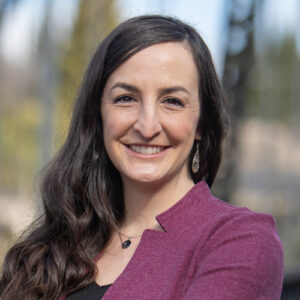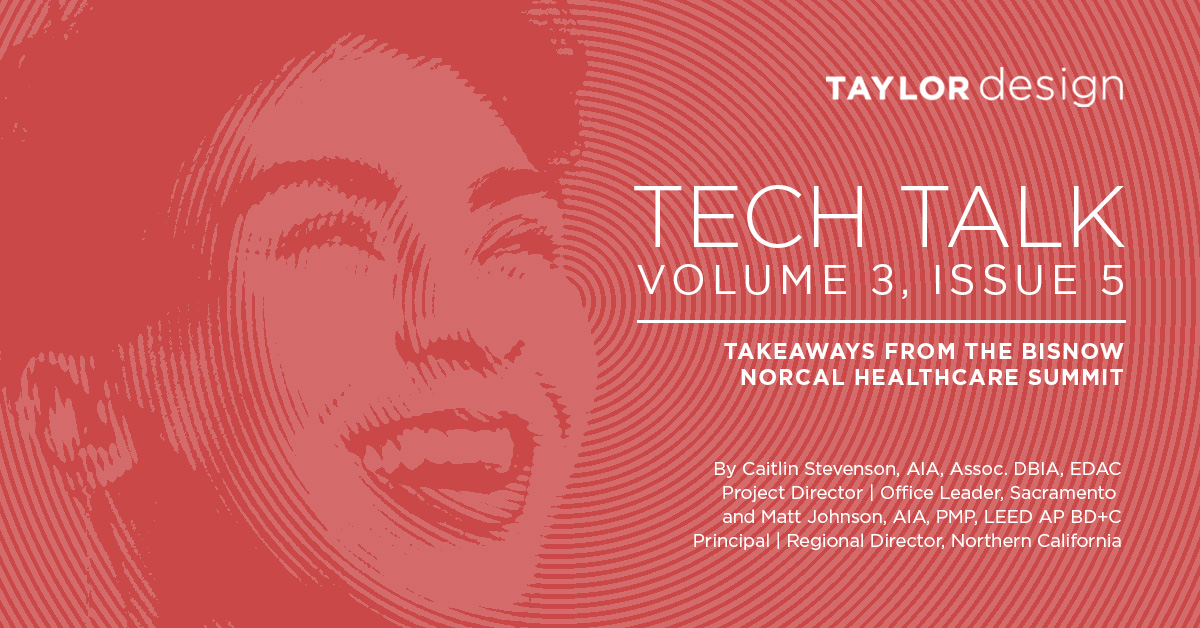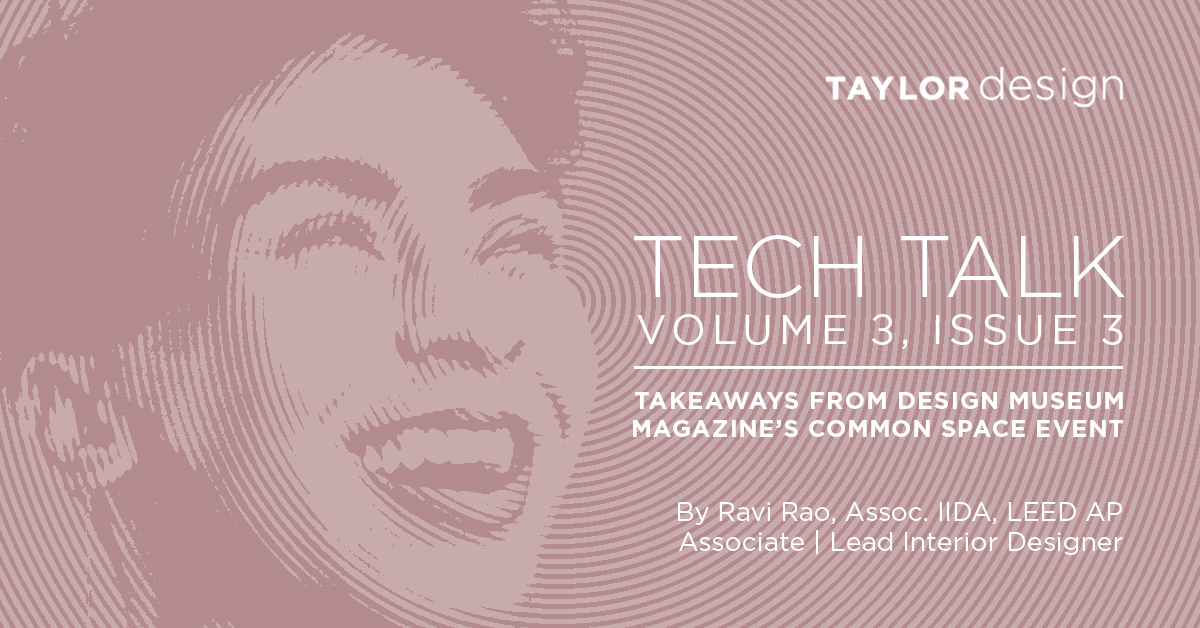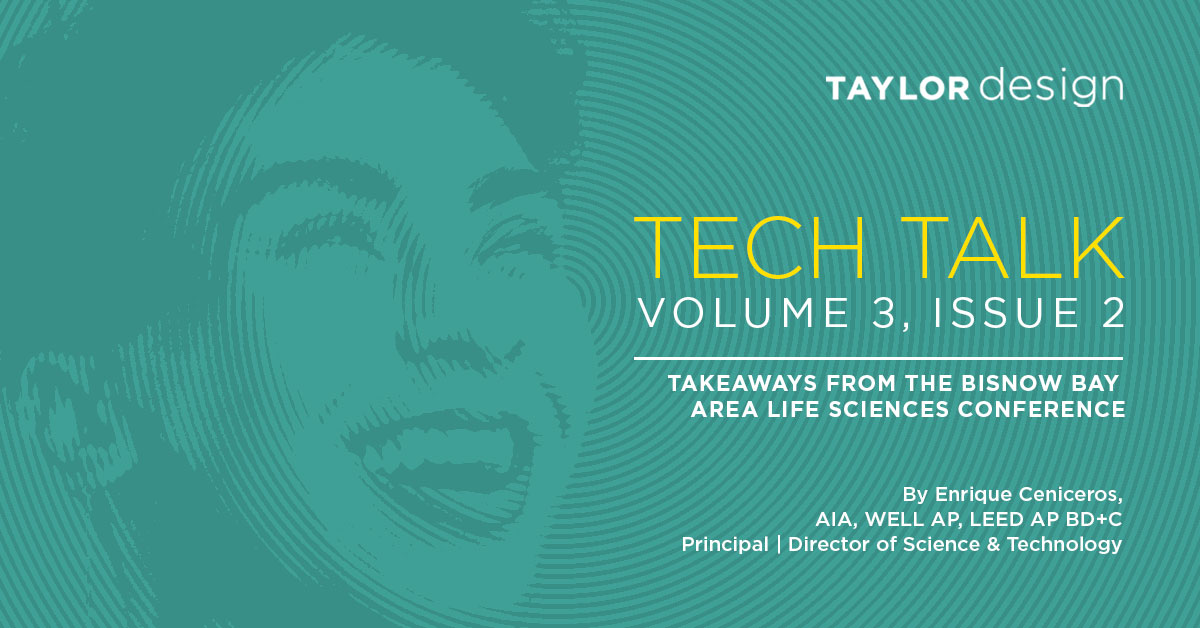Tech Talk: Takeaways from Bisnow NorCal Healthcare Summit
Taylor Design Talks Patient-Centric Environments at NorCal Event
Bisnow’s Northern California Healthcare Summit was rich with Taylor Design contributors. Project Director and Sacramento Office Leader Caitlin Stevenson was a panelist in a session titled “Pioneering Patient-Centric Environments: Navigating Contemporary Challenges in Healthcare Development,” while Matt Johnson, Principal and Northern California Regional Director, served as moderator for “Reshaping Healthcare Spaces for Tomorrow’s Needs.”
The morning centered around important trends affecting the healthcare industry including:
Meeting the challenge of rising construction costs coupled with limited project funding – At a time when capital is expensive and can be difficult to come by, many healthcare providers are looking for creative strategies to meet their growing demand for accessible and timely healthcare. When asked how organizations might address these current conditions, Caitlin noted that an effective way to manage construction costs is sometimes to build less. “By employing a data-driven approach to decision-making, just like our clients do in every other facet of their businesses, healthcare organizations can lower costs by not overplanning or building what they don’t need,” she said. “There is a natural impulse to overcompensate when there are perceptions of inadequate capacity. Stress is a powerful motivator, and there’s a tendency to try to build your way out of the problem. Data can be a useful counterbalance to the perceptions of staff on the front lines – to ensure you build the right thing, at the right size, at the right time.”
Maintaining a patient-centered design focus – Many conversations during the day reinforced how good design – at every touch point – can create the most positive experience for the patient. Some examples that were discussed were:
- Autonomy. Asked about key principles and priorities to ensure the best patient experience, Caitlin referenced the benefits of autonomy. “Patients are more comfortable when given a choice of how to interact with the built environment. It could be as simple as choosing their preferred seating arrangement in the waiting area, or the option to select the music or lighting during an MRI scan. If you can give patients some degree of control over their environment during an experience in which they may otherwise feel vulnerable or helpless, it can be a very powerful thing.”
- Privacy. The session that Matt moderated included a discussion about the importance of patient privacy, including during the often-overlooked telehealth visits. “As telehealth is becoming way more prevalent, it’s important that patients get a sense of privacy on the clinical side. They don’t want to feel like their provider is sitting in a big physician corral or call center. We need to design spaces that allow staff to do their best work and meet expectations for patient privacy, even when the patient and provider aren’t together,” he said.
- Continuity. Caitlin also discussed how continuity of care engenders trust. “A patient might arrive for a solo visit, or they may be frequenting multiple facilities within the same health network. Ensuring that the physical environment is aligned with the health system’s brand creates a sense of familiarity, of knowing what to expect when you walk through the doors. It enhances the perception that this health care facility where they are about to receive care is part of something bigger and well organized, and this builds trust.”
Matt’s session addressed the issue of continuity as well. “A patient’s experience begins as soon as they google search the facility,” he says. “It may start on the website, but will continue all along the way – from how they’re received when they park, how they’re treated during care, and afterward during the billing and reimbursement process. Healthcare systems need to think beyond a single event or encounter. To the patient, the experience is the entire interaction with the facility, the organization, the people and the process.”
The Bisnow Northern California Healthcare Summit took place on November 16 at the Hyatt Regency San Francisco. Its theme was exploring patient-centric developments, evolving delivery models, market trends, and the future of healthcare spaces.


Caitlin Stevenson, AIA, ASSOC. DBIA, EDAC, is a project director and the Sacramento office leader for Taylor Design. Her particular specialty in complex healthcare projects stems from years of experience with a wide variety of project types and scales – ranging from campus-wide master planning projects, to phased inpatient renovations within active hospital departments, to new ground-up construction, and outpatient clinic renovations. Passionate about the application of rigorous design methodology to improve the end-user experience and patient outcomes, her recent work has focused on long-range planning efforts, guiding organizations through a strategic analysis of future facility and space needs to correspond with their projected clinical growth.


Having started his healthcare architecture career in his late teens, Matt Johnson’s, AIA, PMP, LEED AP BD+C, experience runs the gamut. From 3D visualization modeling to facility assessments to construction administration, he has worked for a variety of healthcare providers throughout California. He brings a passion for creating spaces to heal the mind and body through the application of Lean philosophy, Agile software tenets, and human-centered design to every effort on which he is involved. A founding member of the AIA-AAH Healthcare Essentials committee, he has been a speaker at Healthcare Facilities Symposium, is a certified Project Management Professional, and leads the Project Management Quality group at Taylor Design.





